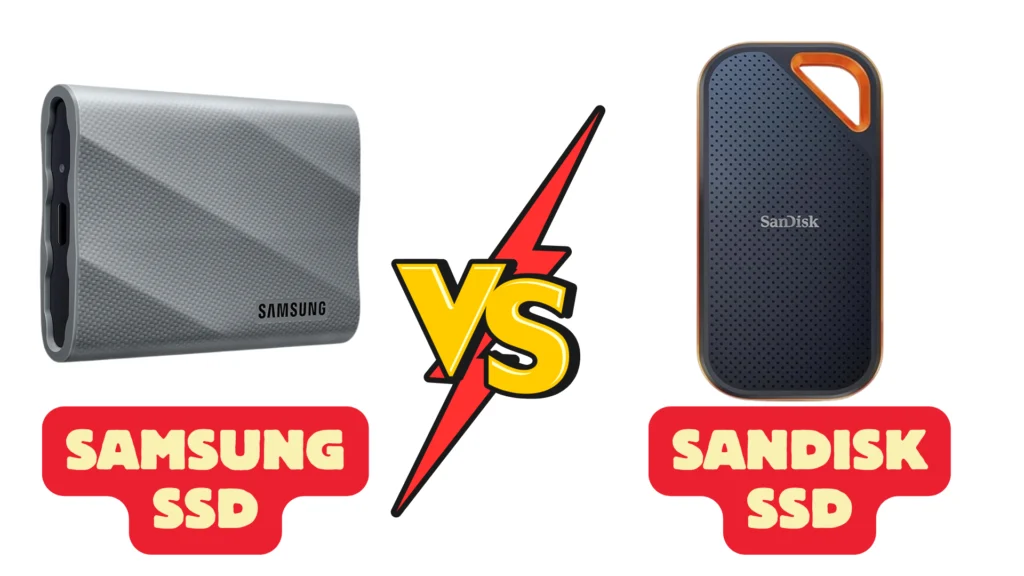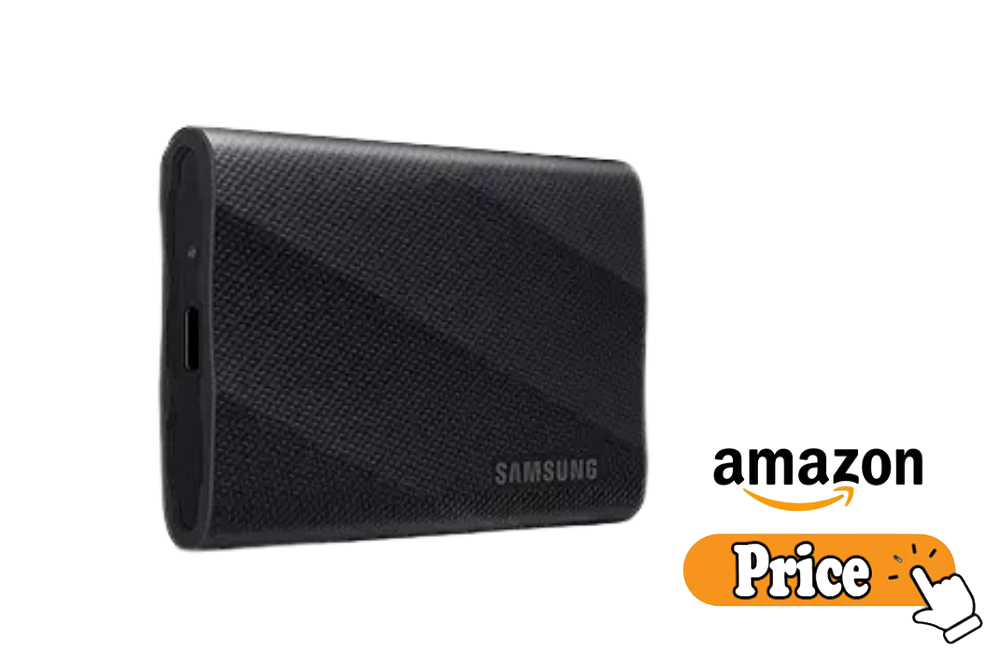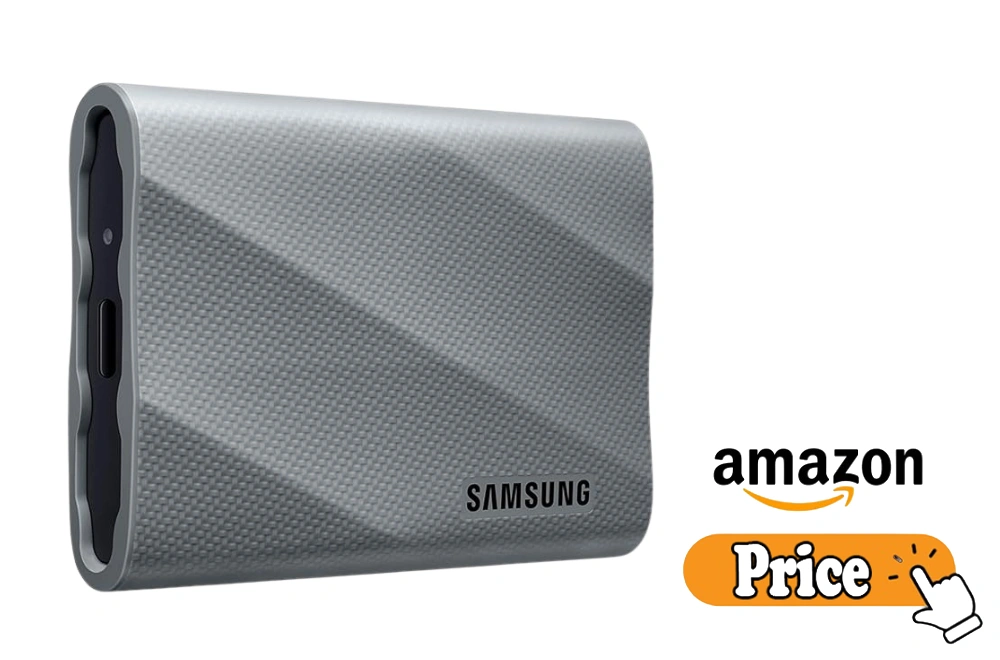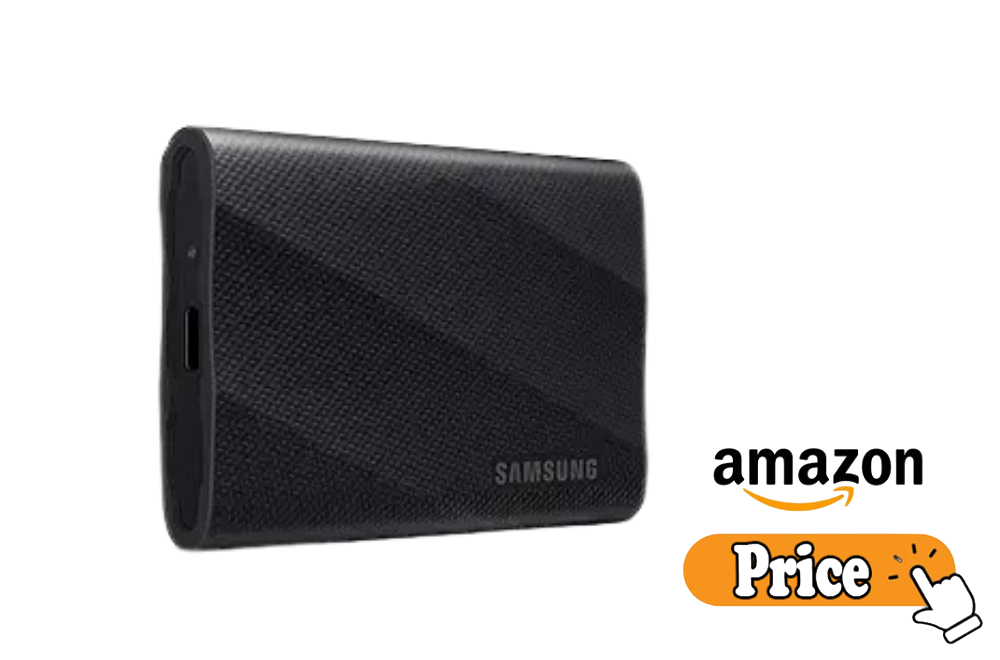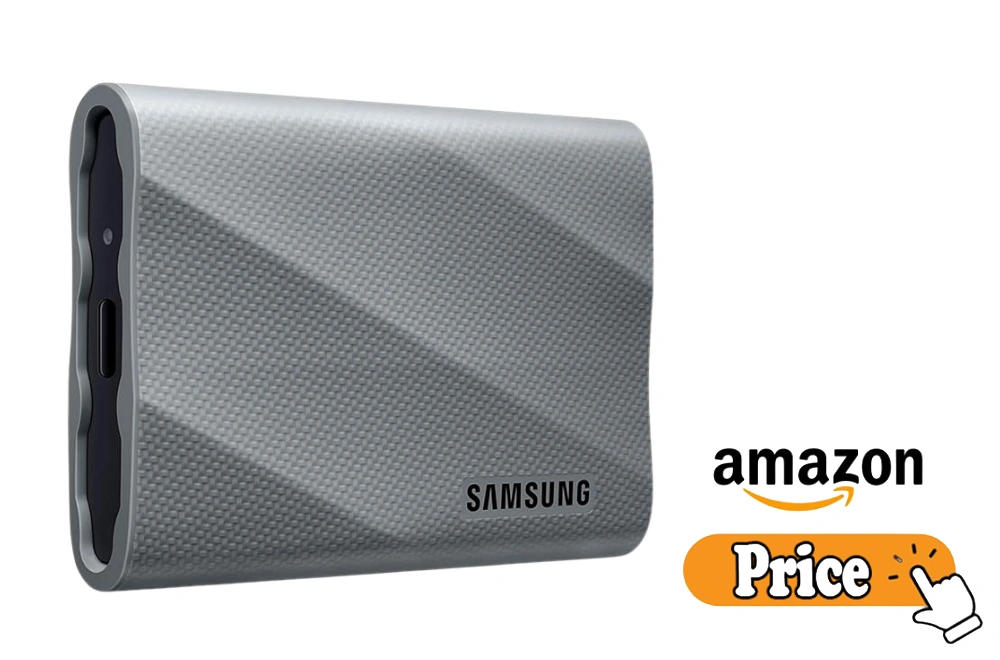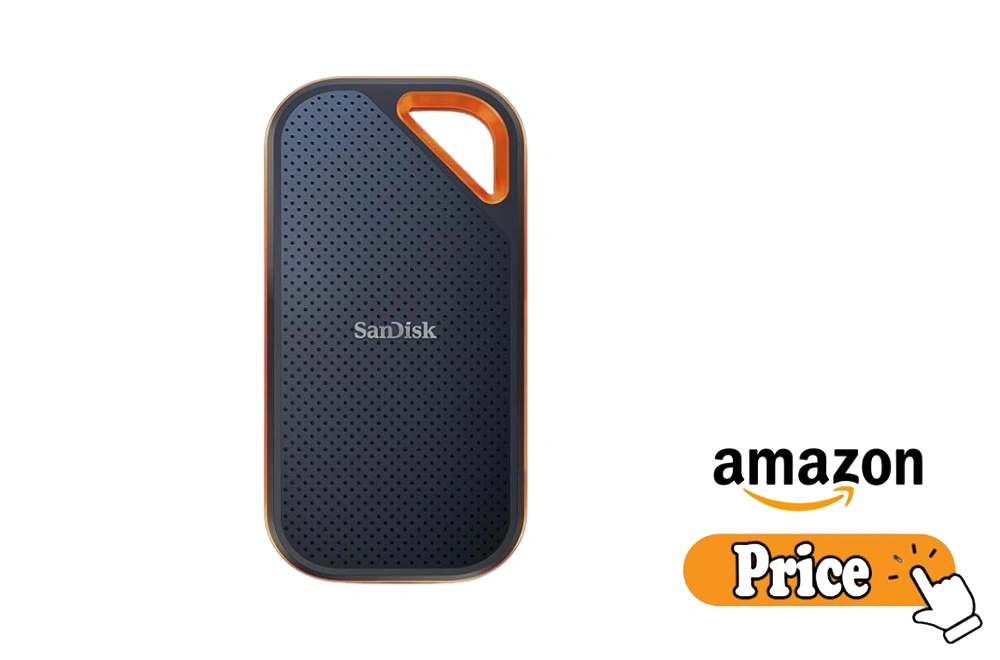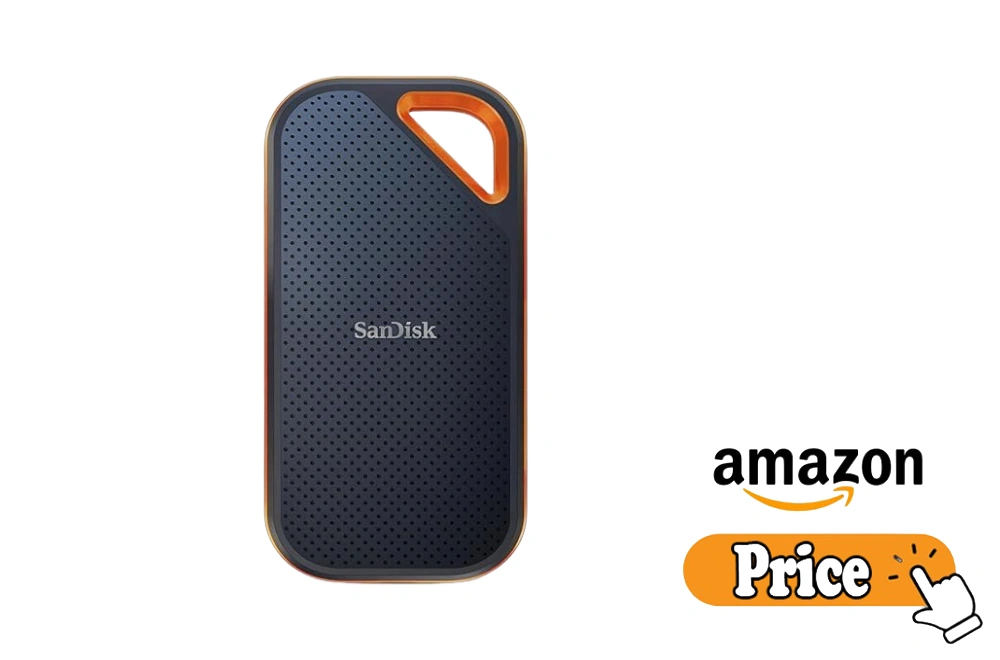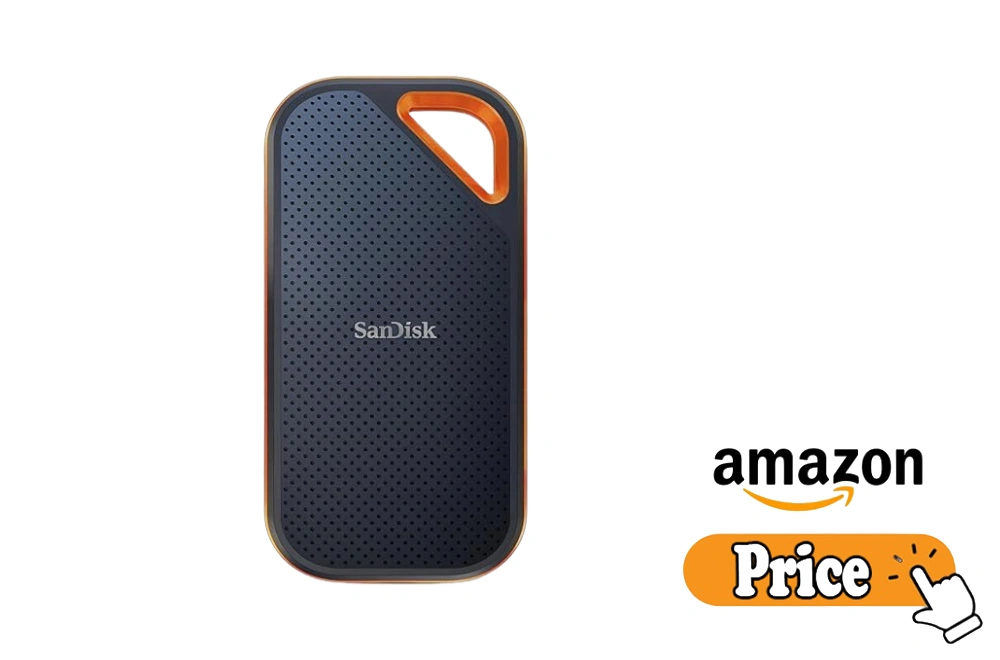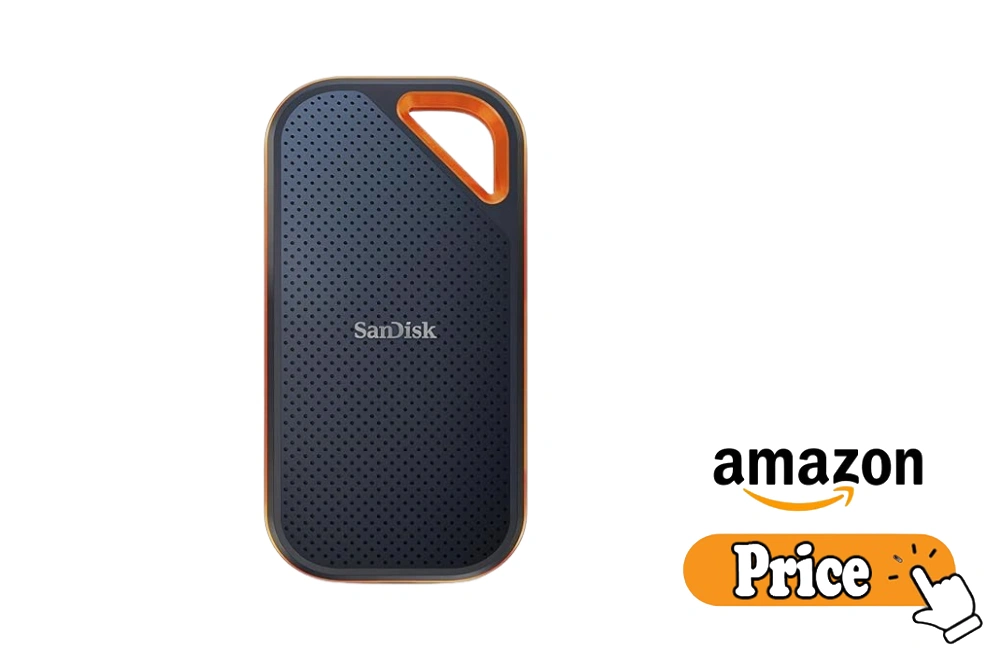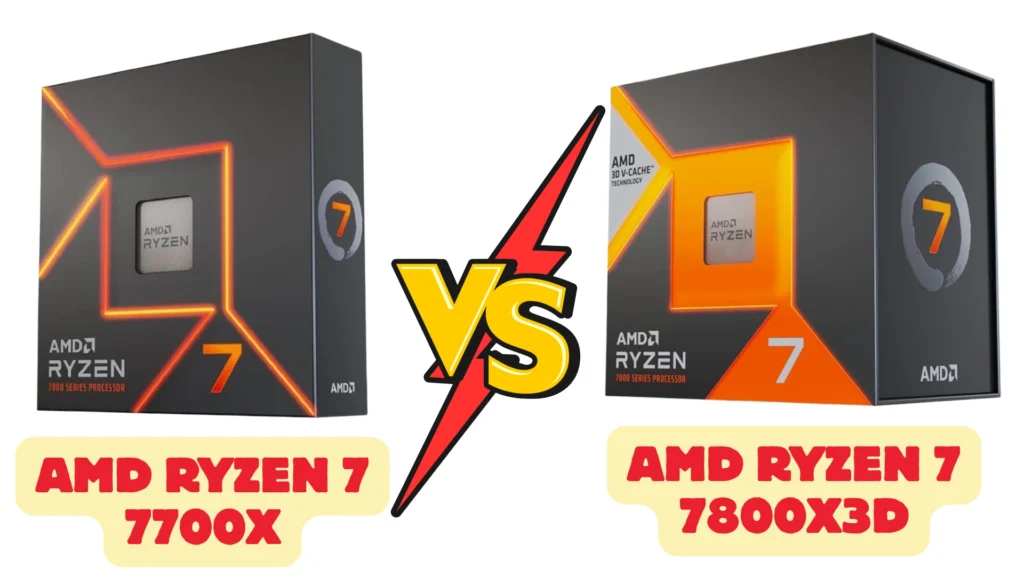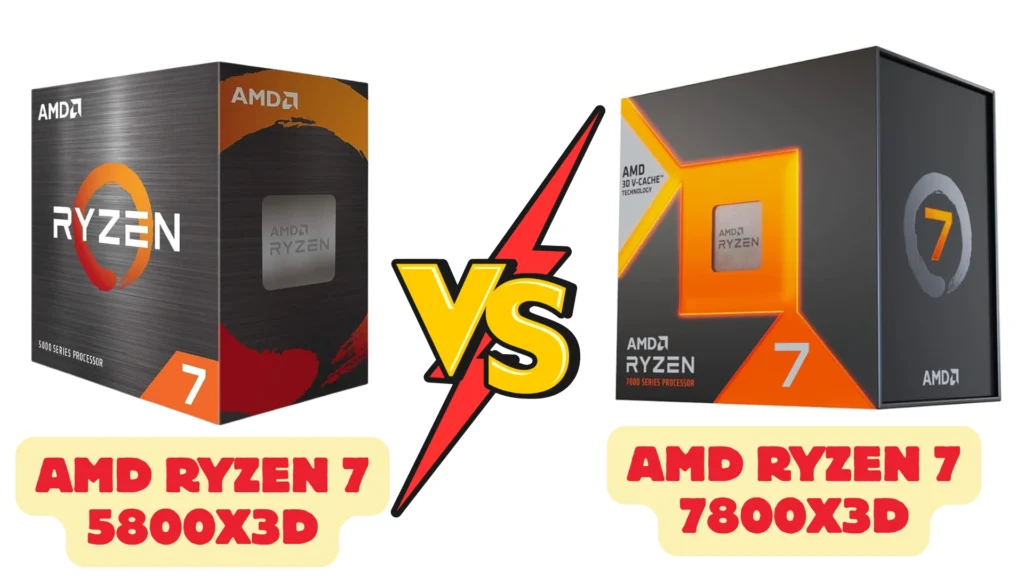Samsung SSD vs SanDisk SSD: My Honest Comparison
Have you ever noticed how fast storage tech keeps evolving? One day it’s Gen 4, and the next, Samsung drops a new Gen 5 SSD that feels like rocket fuel for your PC. I’ve used plenty of drives over the years, from Crucial to SanDisk, but Samsung SSDs vs SanDisk SSD always seem to blend speed with stability in a way that feels natural. It’s not just about numbers—it’s about how smooth your system feels when everything clicks. Today, I’ll share my honest take on Samsung’s latest SSD lineup, how it compares in real use, and whether it’s worth the upgrade.
What I Like
After testing several Gen 5 NVMe drives, I can confidently say Samsung SSDs stand out for all the right reasons. They’ve never just been about raw speed — it’s that blend of reliability, design, and consistency that wins me over every time.
-
Lightning-fast performance: The Samsung 9100 Pro feels like pure power. Whether I’m loading massive files or editing videos, its PCIe 5.0 interface keeps everything smooth and instant.
-
Excellent thermal control: The heatsink design does a solid job. Even during long benchmark sessions on PCMark 10, I noticed minimal throttling — a clear sign of smart thermal management.
-
Dependable endurance: Samsung’s endurance rating (TBW) gives me real peace of mind. I’ve pushed these drives hard, and they still perform like new.
-
Seamless compatibility: Works beautifully with both AMD Ryzen 7000 and Intel Core Ultra 200 series systems. Setup was truly plug-and-play, no firmware headaches.
-
Thoughtful cache design: That LPDDR4X DRAM cache makes multitasking feel effortless. It’s the kind of detail you don’t think about — until you use a drive that doesn’t have it.
What Could Be Better
No SSD is flawless, but Samsung comes pretty close. Here’s what I noticed that could use a small tweak — nothing deal-breaking, just honest feedback from daily use.
-
Pricing at launch: Samsung SSDs, especially Gen 5 models like the 9100 Pro, often launch at a premium. I get it — innovation costs money — but a slightly lower entry price would make it more appealing.
-
Heatsink size: While the thermal design is great, the heatsink is a bit bulky. In compact builds or laptops, it might require a tighter fit.
-
Firmware updates: Updates are smooth but sometimes require the Samsung Magician software to recognize the drive manually. It’s a minor hassle, but one that could be more seamless.
My Personal Experience
I’ve been using Samsung SSDs for more than two years now — from the older Samsung 990 Pro to the newer 9100 Pro Gen 5 NVMe SSD. What impresses me most is their consistency. Whether it’s boot speed, large file transfers, or benchmark testing, Samsung always delivers that reassuring sense of stability.
Design
From the moment you unbox it, the design speaks precision. The brushed metal shell feels premium and purposeful. Compared to the Crucial T705, Samsung’s heatsink feels a bit more refined and cooler to the touch during stress tests. It’s not flashy — it’s efficient. And that subtle elegance fits perfectly in any high-end PC build.
Performance
This is where Samsung SSDs truly shine. On PCMark 10’s Full System Drive Benchmark, the Samsung 9100 Pro delivers exceptional results — quick system boots, near-instant app launches, and incredible consistency under load. Even after long gaming sessions or 4K video edits, I didn’t feel any slowdown.
What sets it apart is how effortless it feels. That LPDDR4X DRAM cache makes everything buttery smooth — almost like the drive anticipates what you’re about to do next.
Build Quality
Samsung’s attention to detail is remarkable. The solid metal casing, tight assembly, and advanced controller design feel like something built to last. The endurance rating is also reassuring — these drives can handle heavy workloads day after day without breaking a sweat.
Even after extended use, my Samsung SSDs have shown no signs of wear or performance dips, which speaks volumes about their quality control and engineering standards.
Alternative Option: Crucial
I’ve worked with storage devices for more than twenty years. During that time, I’ve tested almost every major brand out there. Samsung SSDs have always been my top choice for speed and trust. But recently, Crucial has surprised me with its great mix of value and performance. Let’s look at how both perform in real use.
Crucial SSD vs SanDisk SSD
In my editing setup, I’ve used both Crucial and SanDisk drives while handling large 4K video files. Both promise speed, but they serve slightly different needs. Crucial focuses on performance per dollar, while SanDisk leans on long-term dependability — something I’ve seen firsthand during long video exports.
| Feature | Crucial SSD | SanDisk SSD |
|---|---|---|
| Performance | Fast for daily use and gaming | Steady under heavy workloads |
| Durability | Good endurance rating (TBW) | Excellent for long-term use |
| Price | More budget-friendly | Slightly higher, but reliable |
| Software Support | Simple tools for easy setup | Intuitive SanDisk Dashboard |
| Ideal For | Budget builders and casual gamers | Professionals needing stable output |
Summary: Crucial is perfect for quick builds or budget PCs, while SanDisk offers more peace of mind for long-term use. I use Crucial for fast projects and SanDisk for important storage backups.
Samsung SSD vs Crucial SSD
When comparing Samsung SSDs like the 9100 Pro (Gen 5 NVMe SSD) with Crucial’s T705, the difference feels clear. Samsung aims for cutting-edge speed and top endurance. Crucial, meanwhile, focuses on delivering great value. I tested both on my AMD Ryzen 7000 Series setup, and here’s what I found.
| Feature | Samsung SSD | Crucial SSD |
|---|---|---|
| Performance | Blazing-fast Gen 5 NVMe speeds with PCIe 5.0 interface | Strong Gen 5 speeds, slightly slower in sustained reads |
| Cache Design | LPDDR4X DRAM cache for smooth multitasking | Smaller cache but still efficient |
| Thermal Control | Smart heatsink design keeps temps low | Gets a bit warm under load |
| Endurance Rating (TBW) | High TBW — great for pros | Good for light to moderate use |
| Compatibility | Works great with AMD Ryzen 7000 and Intel Core Ultra 200 Series | Broad Gen 5 support |
| Software Tools | Samsung Magician is polished and powerful | Crucial Storage Executive is simple but reliable |
Summary: Samsung SSDs lead in speed, design, and durability. Crucial stays strong in affordability and accessibility. If you’re after lasting performance, Samsung shines brighter.
Micro SD Card vs Micro SDXC
Over the years, I’ve used both Micro SD and Micro SDXC cards for cameras and laptops. At first, I didn’t think the difference mattered much. But once I started shooting 4K video, I noticed how SDXC handled files faster and smoother.
| Feature | Micro SD Card | Micro SDXC Card |
|---|---|---|
| Storage Capacity | Up to 32GB | Up to 2TB |
| File System | FAT32 | exFAT for larger files |
| Speed | Slower read/write speeds | Much faster for 4K and RAW formats |
| Use Case | Great for phones and small cameras | Best for pro photo and video work |
Summary: Micro SDXC is the clear winner for heavy workloads. I use it daily for large projects where speed and space really matter.
My Final Thoughts on Samsung SSD
If you’re someone who values speed, dependability, and a worry-free setup, a Samsung SSD is hard to beat. But if your top priority is staying within a tight budget, you might find better value with brands like Crucial. From my own builds, Samsung drives have saved me countless hours of waiting—they just work, fast and smooth. Think of them as the silent engine under your PC’s hood—steady, powerful, and always ready to perform. For me, that peace of mind is worth every penny.
Introduction
Ever wondered if a SanDisk SSD is still worth it after years of use? I’ve been using one since college, and it’s been my quiet workhorse through travel, edits, and daily backups. It’s light, fast, and built like a tank—yet small enough to fit in your palm. Sure, I’ve tested others like Crucial, but this one feels more dependable for real work. From storing big video files to booting fast on my Mac, it rarely skips a beat. If you want speed without stress, this SSD makes life easy. Let’s dive into how it really holds up over time.
What I Like
After years of using my SanDisk SSD, I’ve grown to appreciate how reliable and simple it is. It’s one of those gadgets that quietly gets the job done without fuss. Here’s what makes me like it so much:
-
Fast and effortless: It transfers large files in seconds, saving me hours when editing videos or backing up my Mac.
-
Compact and portable: I love how it fits easily into my pocket or bag—it’s travel-friendly and never gets in the way.
-
Weather resistant: I’ve used it in rain and snow during college projects, and it never failed me.
-
Plug-and-play convenience: Works instantly with my MacBook and PC—no setup stress, no software headaches.
-
Reliable long-term performance: Even after years of use, it still feels as fast as the day I bought it.
-
Peace of mind: I trust it for storing my work files, knowing my data is safe and accessible.
What Could Be Better
Even great products have room to grow, and my SanDisk SSD is no exception. These aren’t dealbreakers—just small things that could make it even better:
-
Cable design: The USB-C cable sticks out a bit, which can be awkward when using it on my lap. A shorter, flexible cable would help.
-
Storage limit per drive: I wish larger capacities were more affordable so I could store more without buying extra drives.
-
Indicator light: It’s tiny and easy to miss; a brighter one would help confirm when it’s active or safely ejected.
-
Protective case included: A soft sleeve in the box would make travel even safer for frequent users like me.
My Personal Experience
I’ve been using my SanDisk SSD for over five years—through college projects, work presentations, and travel. It’s been my silent tech companion, never flashy but always dependable. Here’s how it holds up across design, performance, and build quality.
Design
What impressed me first was its clean and functional design. It’s light, slim, and easy to carry—about the size of a card wallet. The rubberized finish gives it a sturdy grip, which saved me from a few accidental drops. Compared to bulkier drives, this one feels made for real life on the go. It’s perfect for students, creators, or anyone who works from cafés or airports. The design makes it less of a gadget and more of a travel buddy.
Performance
In terms of performance, this SSD delivers consistent speed. I’ve transferred gigabytes of videos, photos, and project files without lag or disconnects. On my MacBook, it boots instantly—no waiting, no spinning wheels. Even when multitasking, it stays cool and responsive. What surprised me most is how stable it remains after years of daily use. For me, that reliability matters more than fancy benchmarks—it’s the difference between meeting a deadline and missing one.
Build Quality
The build quality of this SSD feels premium. It’s rugged yet sleek, built to handle daily wear. I’ve dropped it a few times, and it’s survived without a scratch. The weather-resistant body gives extra confidence when working outdoors or commuting. You can tell it’s designed for real users, not just specs on a page. It’s like having a small, unbreakable vault for your data—tough on the outside, safe on the inside.
Alternative Option: Crucial SSD
After using several storage brands over the years, I’ve learned that not all SSDs are created equal. As someone who edits videos, backs up large files, and switches between devices daily, I’ve tested both SanDisk SSD and Crucial SSD side by side. Each has its strengths, and choosing between them depends on what you value most—speed, durability, or affordability. My hands-on experience helped me see the real differences beyond the numbers.
Crucial SSD vs SanDisk SSD
I’ve used both drives for work and travel, testing them in real conditions—not just benchmarks. My SanDisk Extreme SSD handled rough use with ease, while Crucial SSD impressed me with its price and steady reliability. Here’s how they compare in my experience:
| Feature | SanDisk SSD | Crucial SSD |
|---|---|---|
| Speed | Faster data transfer for large files | Decent speed, good for daily tasks |
| Durability | Rugged and weather-resistant | Solid but less resistant to drops |
| Design | Sleek, compact, and travel-ready | Simple and functional |
| Price | Slightly higher but worth it for durability | More budget-friendly option |
| Compatibility | Works seamlessly with Mac and PC | Compatible with most systems |
| Long-Term Reliability | Excellent even after years of use | Good, though slower over time |
Summary:
If you need rugged, travel-ready storage, go with SanDisk SSD. For budget-conscious users who mainly work at a desk, Crucial SSD delivers solid performance for less.
Alternative Option: Micro SD Card
In my tech setup, I also use micro SD cards for cameras and portable backups. Over time, I noticed that choosing between a micro SD card and a micro SDXC card depends on your device and data needs. I’ve tested both during travel and content creation—each has its perks and limits.
Micro SD Card vs Micro SDXC
During my field projects, I used a micro SD card for smaller video shoots and a micro SDXC card for 4K footage. Both performed well, but their differences became clear in speed and storage limits. Here’s my experience in a simple breakdown:
| Feature | Micro SD Card | Micro SDXC Card |
|---|---|---|
| Storage Capacity | Up to 32GB | 64GB and higher |
| Speed Class | Ideal for HD videos and photos | Handles 4K, RAW, and large files easily |
| Compatibility | Works with older devices | Best for modern cameras and laptops |
| File System | FAT32 | exFAT (supports larger files) |
| Price | More affordable | Slightly higher but future-proof |
Summary:
If you only need to store photos or short clips, a micro SD card is enough. But for high-resolution video or professional use, a micro SDXC card gives the speed and space you’ll really notice in your workflow.
My Final Thoughts on SanDisk SSD
If you’re someone who values durability, speed, and travel-ready storage, a SanDisk SSD could be the perfect fit for you. However, if your priority is strict budget-friendliness, you might explore other options like Crucial SSD. From my experience, these drives handle years of heavy use without hiccups—they survived college, travel, and countless video projects in my setup. They’re compact, rugged, and reliable, making them feel like a trustworthy companion for your data. Just treat them with basic care, and they’ll serve you far longer than expected.
Samsung SSD vs SanDisk SSD – Details Comparison
I’ve been testing both Samsung and SanDisk SSDs for years.
Each brand has its own style. Samsung feels smooth and fast, while SanDisk is tough and steady.
Let’s look at how they compare in real use.
Tread Design & Grip: Samsung SSD vs SanDisk SSD
Samsung looks sleek and metal-built.
SanDisk feels rugged with a grip that suits travel use.
| Feature | Samsung SSD | SanDisk SSD |
|---|---|---|
| Design Style | Smooth, brushed metal | Rubber grip, tough build |
| Handling | Light, fits tight builds | Easy to hold, no slip |
| Heat Control | Smart heatsink on some models | Cools well with case design |
| Port Type | USB-C or PCIe | USB-C and USB-A |
Ratings:
Samsung ★9/10
SanDisk ★8.5/10
Durability & Tread Life: Samsung SSD vs SanDisk SSD
Samsung lasts long under heavy work.
SanDisk handles drops and outdoor use better.
| Feature | Samsung SSD | SanDisk SSD |
|---|---|---|
| Endurance (TBW) | High for pros | Great for travel and daily use |
| Shock Resistance | Strong | Excellent |
| Heat Protection | Smart control | Natural air cooling |
| Long-Term Use | Keeps speed for years | Reliable in harsh spots |
Ratings:
Samsung ★9.5/10
SanDisk ★9/10
Size Variations: Samsung SSD vs SanDisk SSD
Both brands offer many sizes and forms.
You can find one that fits any setup.
| Feature | Samsung SSD | SanDisk SSD |
|---|---|---|
| Size Range | 250GB – 4TB | 500GB – 4TB |
| Form Factor | NVMe, 2.5”, Portable | Portable SSD, 2.5” SATA |
| Weight | Light metal case | Ultra-light and compact |
| Laptop Fit | Excellent | Great for mobile users |
Ratings:
Samsung ★9/10
SanDisk ★9/10
Off-Road Performance: Samsung SSD vs SanDisk SSD
Think of this as how they handle stress — like gaming or editing.
Samsung feels faster; SanDisk stays steady.
| Feature | Samsung SSD | SanDisk SSD |
|---|---|---|
| Heavy File Handling | Excellent | Good |
| Gaming Loads | Smooth and quick | Slight delay |
| 4K Editing | Handles files fast | Can warm a bit |
| Multitasking | Easy and quick | Slower with many apps |
Ratings:
Samsung ★9.5/10
SanDisk ★8.5/10
On-Road Performance: Samsung SSD vs SanDisk SSD
Both work well for daily use.
Boots are quick and copies are fast.
| Feature | Samsung SSD | SanDisk SSD |
|---|---|---|
| Boot Speed | Instant | Fast |
| File Copy Speed | Very fast | Reliable and stable |
| Power Use | Moderate | Very efficient |
| Response Time | Instant | Slight delay at times |
Ratings:
Samsung ★9.5/10
SanDisk ★9/10
Temperature Performance: Samsung SSD vs SanDisk SSD
Samsung keeps heat under control.
SanDisk stays cool without fans.
| Feature | Samsung SSD | SanDisk SSD |
|---|---|---|
| Heatsink Design | Smart design | No heatsink, cools naturally |
| Thermal Throttling | Rare | Rare |
| Heat Spread | Even and safe | Casing cools well |
| Best Use | Desktop and gaming | Laptop and travel |
Ratings:
Samsung ★9.5/10
SanDisk ★8.5/10
Comfort & Noise Levels: Samsung SSD vs SanDisk SSD
Both are silent and smooth.
No moving parts mean peace and quiet.
| Feature | Samsung SSD | SanDisk SSD |
|---|---|---|
| Noise | Silent | Silent |
| Heat Feel | Warm when busy | Cool most times |
| Grip & Feel | Smooth metal | Rubber comfort |
| Vibration | None | None |
Ratings:
Samsung ★9/10
SanDisk ★9/10
Technologies: Samsung SSD vs SanDisk SSD
Samsung adds smart tools.
SanDisk keeps things simple but safe.
| Feature | Samsung SSD | SanDisk SSD |
|---|---|---|
| Cache System | LPDDR4X DRAM | Basic SLC |
| Encryption | AES 256-bit | AES 256-bit |
| Software | Samsung Magician | SanDisk Dashboard |
| Updates | Frequent | Stable but fewer |
Ratings:
Samsung ★9.5/10
SanDisk ★8.5/10
Costs: Samsung SSD vs SanDisk SSD
Samsung costs more but offers extras.
SanDisk gives strong value at lower prices.
| Feature | Samsung SSD | SanDisk SSD |
|---|---|---|
| Launch Price | Higher | Lower |
| Long-Term Value | High | Great value for money |
| Entry Range | Starts near $80 | Starts near $60 |
| Market Reach | Global | Global |
Ratings:
Samsung ★8.5/10
SanDisk ★9.5/10
Fuel Efficiency Impact: Samsung SSD vs SanDisk SSD
Both use little power.
SanDisk draws even less on idle.
| Feature | Samsung SSD | SanDisk SSD |
|---|---|---|
| Power Use | Efficient | Very low |
| Battery Impact | Small | Almost none |
| Heat Output | Slightly higher | Very low |
| Energy Save Mode | Yes | Yes |
Ratings:
Samsung ★9/10
SanDisk ★9.5/10
Longevity & Maintenance: Samsung SSD vs SanDisk SSD
Samsung runs longer under load.
SanDisk needs less care.
| Feature | Samsung SSD | SanDisk SSD |
|---|---|---|
| Lifespan | Up to 1.5M hours | Up to 1.2M hours |
| Software Tools | Smart checkups | Simple care tools |
| Maintenance | Auto firmware fix | Plug and play |
| Data Safety | Excellent | Very good |
Ratings:
Samsung ★9.5/10
SanDisk ★9/10
FAQs for Samsung SSD vs SanDisk SSD
Which is faster: Samsung SSD or SanDisk SSD?
Samsung SSDs generally offer faster read/write speeds, especially in high-end models. SanDisk SSDs are steady but slightly slower for heavy tasks.
Are Samsung SSDs more reliable than SanDisk SSDs?
Both brands are reliable, but Samsung SSDs often have higher endurance ratings. SanDisk SSDs remain solid for everyday use and casual workloads.
Can I use Samsung and SanDisk SSDs on a Mac?
Yes, both Samsung and SanDisk SSDs are compatible with Mac and PC. You may need formatting depending on your device.
Which is better for gaming: Samsung SSD or SanDisk SSD?
Samsung SSDs handle large game files faster, reducing load times. SanDisk SSDs are still good for casual gaming and general storage.
Is it worth switching from SanDisk SSD to Samsung SSD?
If speed and long-term endurance matter, upgrading to Samsung SSD can help. Otherwise, SanDisk SSDs provide solid performance at a lower cost.
Read More:
Micro SD Samsung vs Sandisk: My Honest Insights
Sandisk Extreme Plus vs Ultra – A Candid Guide
SanDisk Ultra vs Extreme: Surprising Speed and Reliability

